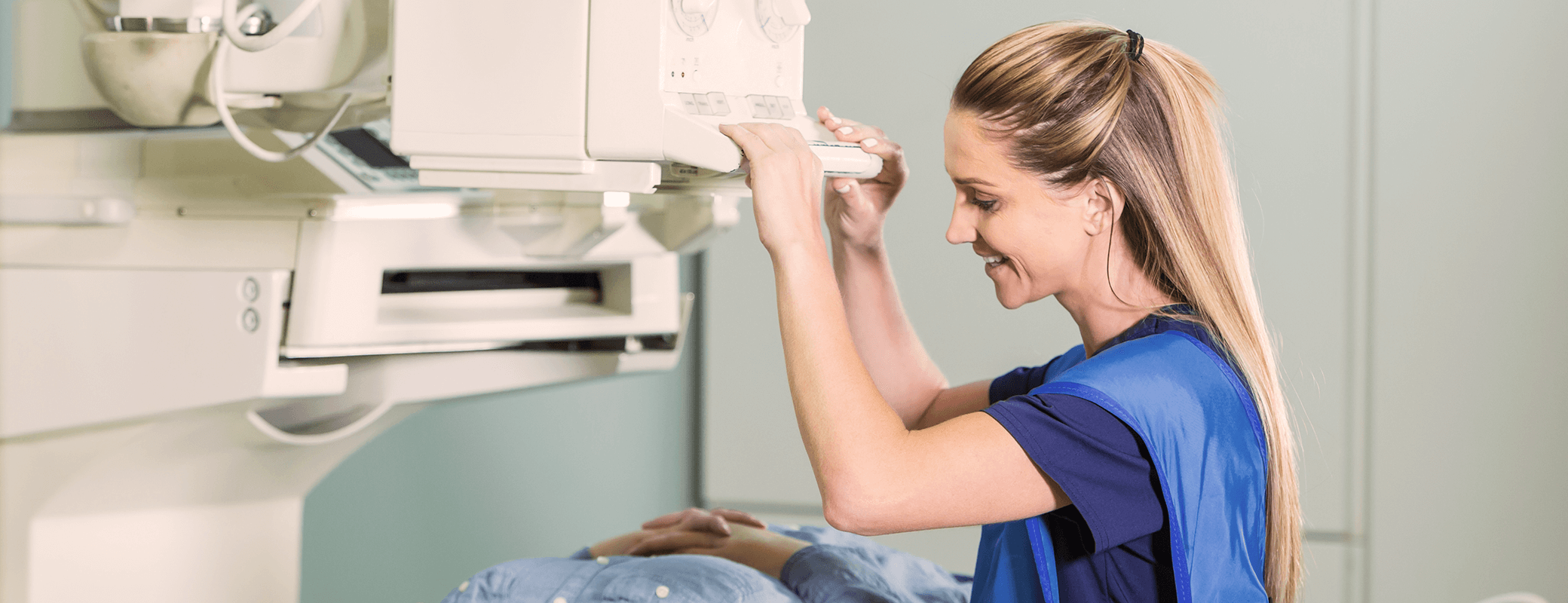
What is an X-ray?
An X-ray is a quick, painless test that produces images of the structures inside your body — particularly your bones. An X-ray machine sends individual x-ray particles through the body. A computer is used to record the images that are created from a digital x-ray plate.
Dense structures, such as bone, will block most of the x-ray particles and will appear white. Metal and contrast media* will also appear white. Structures containing air will be black, and muscle, fat, and fluid will appear as shades of gray.

What to Expect
An X-ray machine produces a tiny burst of radiation that passes through your body and records an image on a specialized plate. It’s a safe level of radiation, and you will not feel the X-ray.
A technologist will position your body to obtain the necessary views. Pillows may be used to help you hold the proper position. Much like conventional photography, motion causes blurry images on radiographs, and thus, patients may be asked to hold their breath or not move during the brief exposure (about 1 second).
An X-ray procedure may take only a few minutes for a bone X-ray, or more than an hour for more-involved procedures, such as those using a contrast medium.
After an X-ray, you can generally resume normal activities. Routine X-rays usually have no side effects. However, if you receive an injection of contrast medium before your X-rays, call your doctor if you experience pain, swelling, or redness at the injection site.
Preparing for Your X-ray
Different types of X-rays require different preparations. Ask the imaging center to provide you with specific instructions when scheduling your appointment.
In general, you undress whatever part of your body needs examination. You may be asked to wear a gown during the exam, depending on which area is being X-rayed. You may also be asked to remove jewelry, eyeglasses, and any metal objects that may obscure the X-ray image because these objects can show up on an X-ray.
Before some types of X-rays, you’re given a liquid called contrast medium. Contrast mediums, such as barium and iodine, help outline a specific area of your body on the X-ray image. You may swallow the contrast medium or receive it as an injection or an enema.
If abdominal studies are planned, and you have had a barium contrast study (such as a barium enema, upper GI series, or barium swallow) or taken medications containing bismuth (such as Pepto-Bismol) in the last 4 days, the test may be delayed until the contrast has fully passed.
Due to the radiation used for this test, women should always inform their physician and the X-ray technologist if there is any possibility that they may be pregnant.
